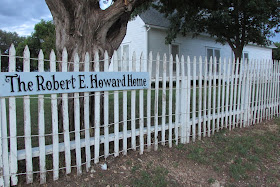The Great Depression was the longest lasting economic downturn in the history of mankind. It not only had a deep effect here in the U.S. but the rest of the world felt its squeeze as well. Despite its woes, those who lived through The Great Depression still had to get on with their lives and try and find a way to survive. By 1933 when the Great Depression had reached its nadir, some 15 million people in the U.S. alone were without work, almost half the banks in the U.S. had closed their doors, and Americans (as well as the rest of the world) were in dire straits. However, in the midst of this nadir, the entertainment industry was booming. People were trying to forget their troubles by turning their attention to films, sports (in large part boxing), books, magazines and other distracting things.
In 1933 some of the greatest classic films were released: King Kong, Duck Soup, I’m No Angel, Queen Christina, Little Women, and others. The first drive-in movie theater was built in Camden, NJ that year, and MGM worked on gaining the rights to a film titled The Wizard of Oz. In June of 1933, Primo Carnera defeated Jack Sharkey in the sixth round (with a KO) to win the World Heavyweight Championship. That same year, Jerry Siegel and artist Joe Shuster created the iconic character “Superman.” Underneath all these hugely popular events a seventeen year old teenager was hard at work developing the first fanzine for the weird fiction genre in hopes that it would attract some of the most popular writers in the Weird Fiction and Science Fiction pulp magazine industry.
The first writers to jump on board Hornig’s fanzine were Clark Ashton Smith, H.P. Lovecraft, and August Derleth. Other writers would join the fanzine in its first year: Julius Schwarts (who would eventually make his name in the comic book industry), Forrest Ackerman (magazine editor and an agent for Sci-fi writers such as Ray Bradbury, Isaac Asimov, L. Ron Hubbard, etc.), R.H. Barlow (author, poet, and previous executor of H.P. Lovecraft’s literary estate) and Robert E. Howard. In its second year, Robert Bloch made a contribution. The circulation of The Fantasy Fan is unknown. My guess is that it was fairly exclusive. Additionally, according to Wikipedia, here are some of the new stories from weird fiction authors that appeared in The Fantasy Fan,
First publication of several works by noteworthy authors occurred in The Fantasy Fan, including works by Lovecraft, Smith, Robert E. Howard, August Derleth, and Robert Bloch. Perhaps one of the magazine's greatest achievements, though, was the serialization of the revised version of Lovecraft's Supernatural Horror in Literature (October 1933-February 1935); the serialization proceeded until it had reached the middle of Chapter VIII and the magazine folded. The Fantasy Fan also saw the first publication of Lovecraft's stories: "The Other Gods" (November 1933) and "From Beyond" (June 1934) as well as reprints (from amateur papers) of "Polaris" (February 1934) and "Beyond the Wall of Sleep" (October 1934); it also published the poems "The Book" (October 1934), "Pursuit" (October 1934), "The Key" (January 1935), and "Homecoming" (January 1935) from Lovecraft's sonnet cycle Fungi from Yuggoth. Lovecraft was represented in no less than seventeen of the eighteen issues published. The October 1934 issue was dedicated to Lovecraft.
 |
| Marvel Tales w/Slipcase The Fantasy Fan |
In the same year that The Fantasy Fan ceased publication, another fanzine called Marvel Tales began publication. Marvel Tales was edited by William L. Crawford. He was the first to use the name Marvel Tales which would be subsequently used again several times after Crawford’s zine ended. William Crawford was a publisher and editor who also wrote science fiction stories. Crawford lived in Everett, PA and had been an ardent science and weird fiction fan. He was also responsible for the inception of another non-paying weird fiction zine titled Unusual Stories. His Marvel Tales zine had a very short run, all of 5 issues. However, he was able to garner a few top-notch fantasy and science fiction authors of the day to contribute: H.P. Lovecraft, August Derleth, Robert E. Howard, and Frank Belknap Long.
Marvel Tales has a more mysterious history and demise than The Fantasy Fan. After the fifth issue, the magazine announced with great enthusiasm that its next issue would be on newsstands. After this last mention, no other issues were printed. It disappeared. This was probably due to its non-professional (non-paying) status and the high costs of publishing such a zine in the 1930s. It also never gained a strong enough readership to keep it alive. There is scant material written about Crawford’s Marvel Tales. Even so, in 2012, Lance Thingmaker, after the success of his facsimile for The Fantasy Fan, created a facsimile for Marvel Tales. Thingmaker did a 300 print run with the first 100 books tagged, numbered, and placed in nice slipcases.







